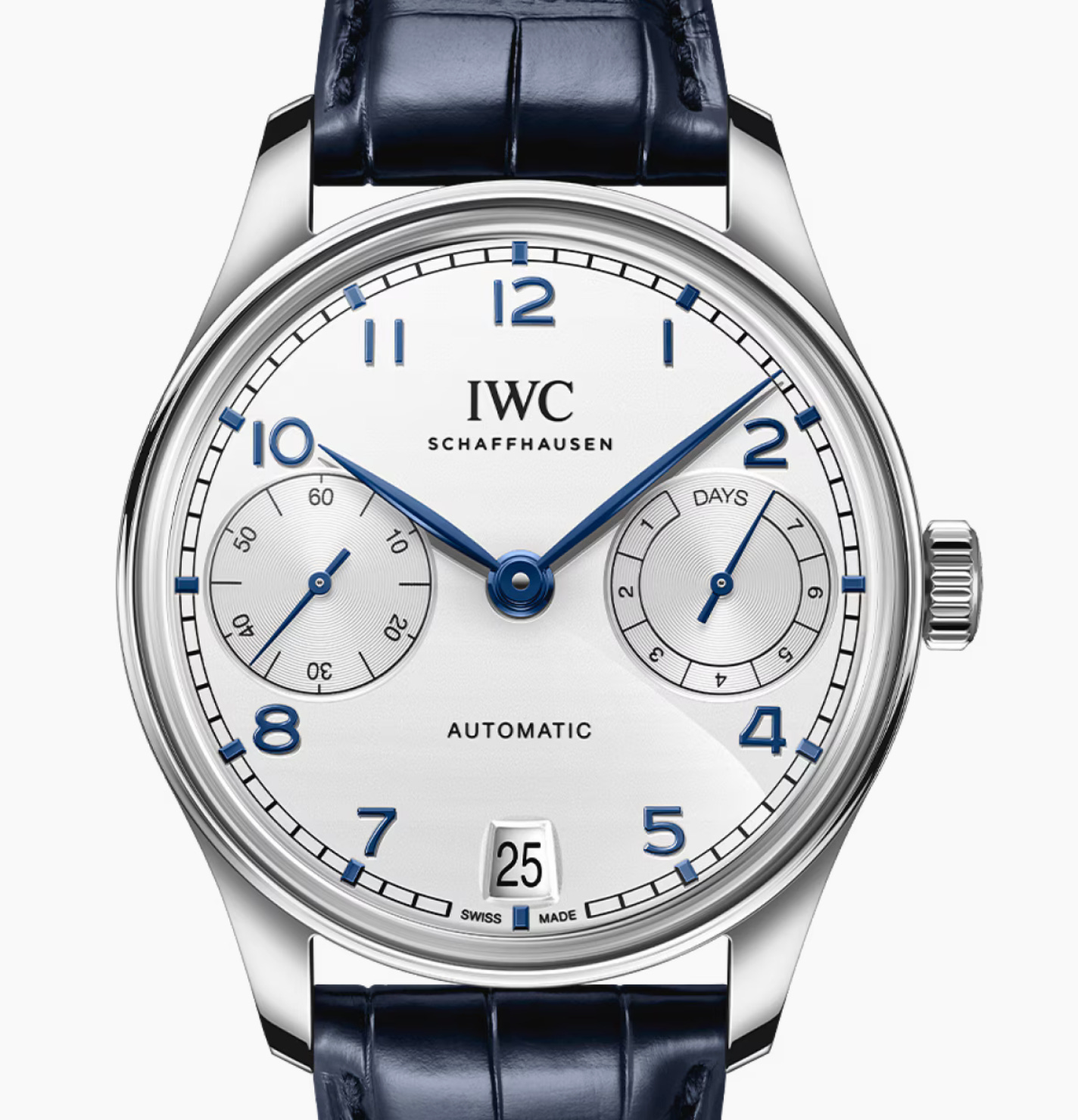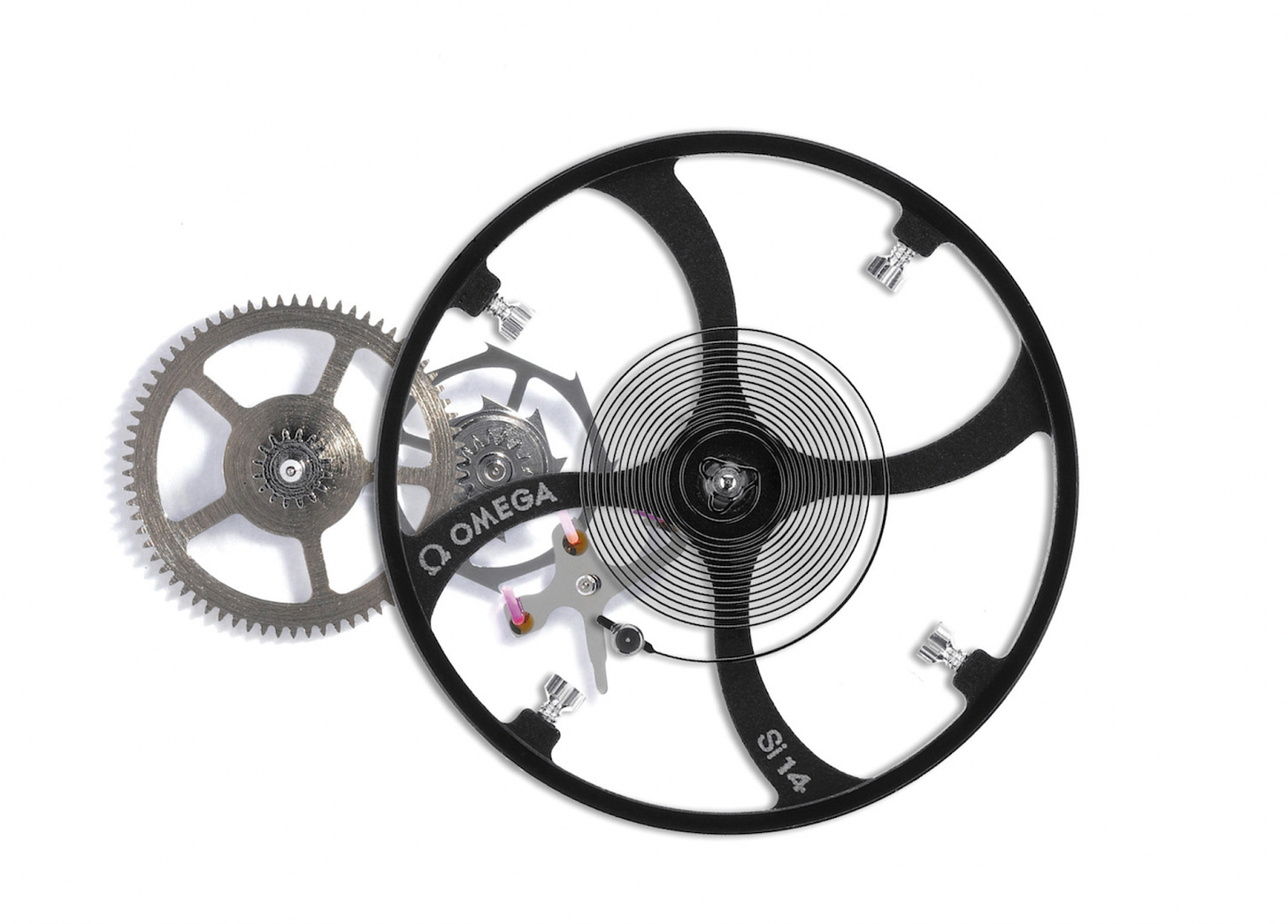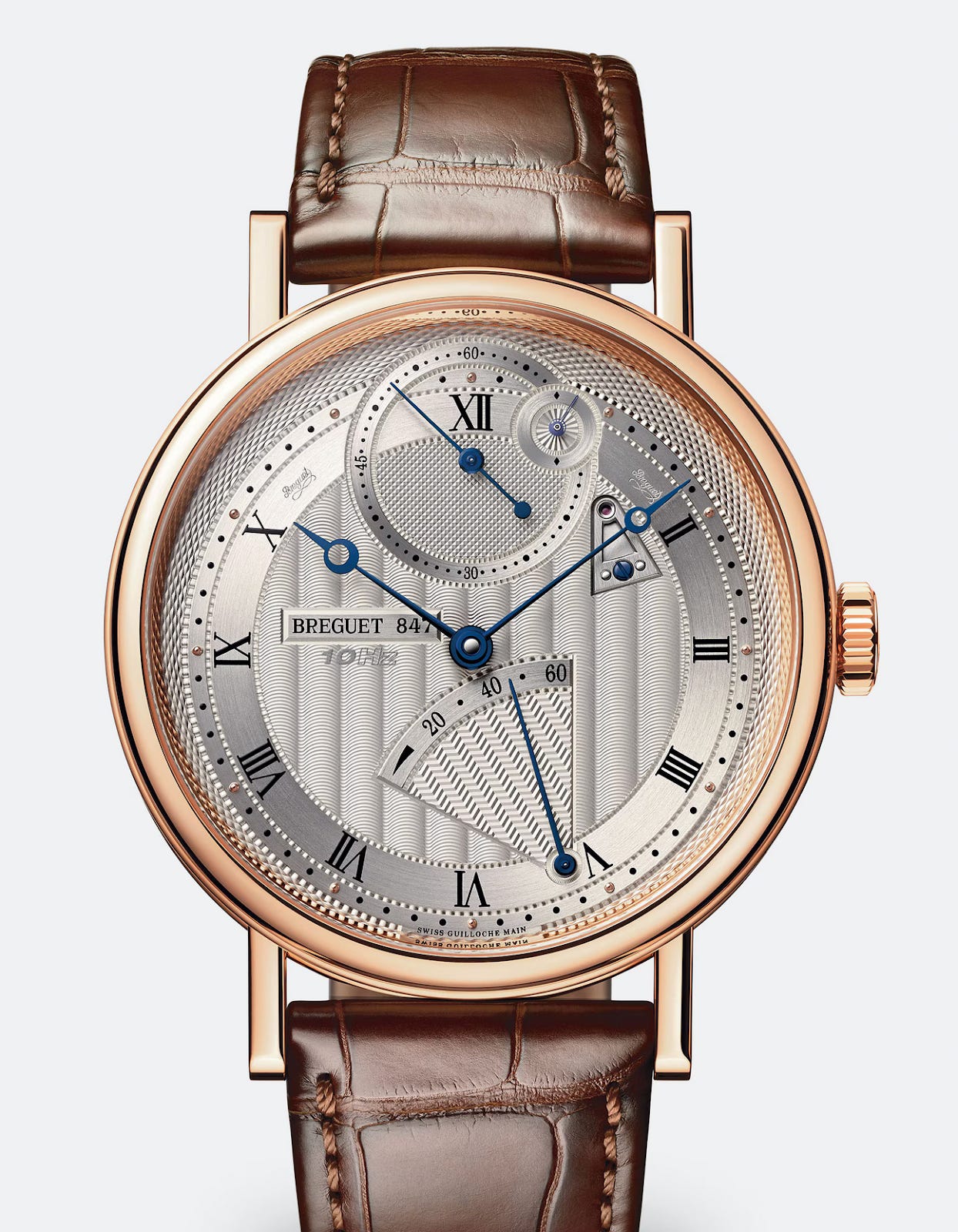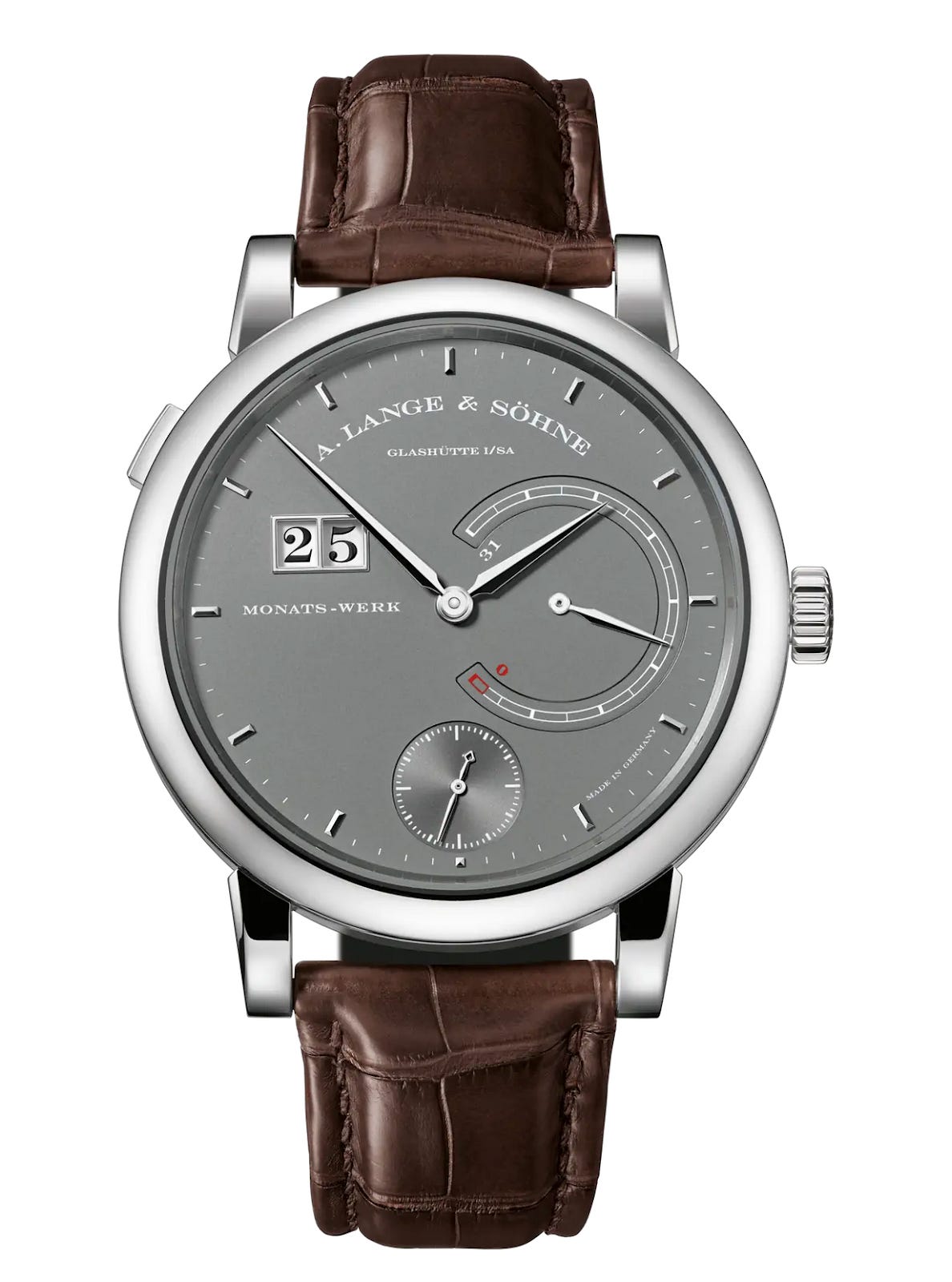The first power reserve indicator
The first known implementation of a power reserve indicator was by Jaeger-LeCoultre in 1948, with their Powermatic model. The Powermatic was a significant advancement in horology, providing a practical benefit to the wearer by displaying the remaining running time of the watch.
Although Jaeger-LeCoultre is often credited with the first modern power reserve indicator, the concept dates back even further. Historical records suggest that Breguet had created watches with a similar function as early as the 18th century. However, Jaeger-LeCoultre's 20th-century innovation popularized the feature in wristwatches, making it a common complication in mechanical watches after that.
The 1948 Jaeger-LeCoultre Powermatic features a rotating disc visible through an aperture under the 12 o'clock hour, which indicates the power reserve in hours.
Source: Jaeger-LeCoultre
Key factors that influence the power reserve in mechanical watches
The power reserve of a mechanical watch, which is the duration a watch can run after being fully wound, is influenced by several key factors. A longer and thinner mainspring can store more energy, increasing the power reserve. Conversely, a shorter or thicker mainspring will store less energy. Watches with multiple mainspring barrels can store more energy and release it gradually, leading to a longer power reserve. Two mainspring barrels can release energy sequentially or in parallel. When in sequence, the torque1 remains consistent for a more extended period, which is crucial for accuracy. When in parallel, the mainsprings release energy simultaneously, delivering a higher torque; however, this approach may not necessarily extend the power reserve as significantly as when the barrels release in sequence.
The winding system in a self-winding mechanical watch plays a crucial role in determining the power reserve. The efficiency of the winding mechanism and the wearer's activity level influence the power reserve. Systems like the Pellaton winding mechanisms by IWC are designed to maximize the energy transferred to the mainspring, improving the overall power reserve. Developed by Albert Pellaton, a Swiss watchmaker for IWC Schaffhausen in the 1950s, the Pellaton system winds the mainspring with wrist movements in both directions (clockwise and counterclockwise). The system uses a pawl-based mechanism that reduces friction and wear. Traditional automatic movements often rely on gears and wheels that can wear out over time due to constant friction.
The IWC Portuguese Automatic uses a Pellaton winding system and features a 7-day power reserve.
Source: IWC.com
As the mainspring unwinds, the gear train transfers the energy to the escapement. The efficiency of the gear train affects the power reserve: high-precision manufacturing and optimal gear design reduce friction and energy loss. Proper lubrication of the gear train components also reduces friction. At the end of the gear train, the energy released by the mainspring escapes to the balance wheel. Modern advanced escapements like Omega's co-axial escapement help minimize sliding friction and enable direct energy transfer to the balance spring. This results in reduced wear and greater efficiency, enhancing a longer power reserve.
Omega's co-axial escapement was invented by English watchmaker George Daniels in 1976 and patented in 1980. It is one of the few watch escapements invented in modern times.
Source: monochrome.com
The materials used for the balance spring can also impact the power reserve. Silicon balance springs are lighter and have a low friction coefficient; they are unaffected by magnetic fields and display better stability through thermal variations. These characteristics reduce the energy required to maintain the balance wheel's oscillations, maintain consistent performance, prevent energy loss, and potentially extend the power reserve.
Breguet Classique Chronométrie 7727: the watch features a silicon escapement and balance spring, contributing to its high precision and a power reserve of 60 hours.
Source: Breguet.com
Power reserve influences the accuracy of a mechanical watch
Variations in the torque delivered by the mainspring can influence the accuracy of a mechanical watch and affect the power reserve. High-quality watches are designed to minimize these variations, but some degree of change is often inevitable. For a watch to keep accurate time, the torque delivered should be as consistent as possible. The torque is generally more stable in the middle of the power reserve, leading to better accuracy. When the mainspring is fully wound or nearly exhausted, the torque can be less consistent, potentially affecting accuracy.
Watches with longer power reserves (70 hours or more) often incorporate advanced materials and engineering to maintain consistent torque over a longer period, which can help reduce accuracy variations. Conversely, watches with shorter power reserves might experience more noticeable changes in accuracy as the mainspring's tension changes more rapidly over a shorter duration.
Choosing between a long or short power reserve for your next watch
One of the main benefits of high-power reserve mechanical watches is convenience; these watches can run for several days, often 70 hours or more, without needing to be wound. These features are handy for those who rotate between multiple watches, as they reduce the frequency of manual winding and the need to reset the time and date. The extended power reserve is also practical for occasional wear, ensuring that the watch continues to run and keeps accurate time even when not worn daily. Moreover, high-power reserve watches often signify advanced engineering and craftsmanship, which can be a mark of prestige and quality.
There are also downsides to high-power reserve watches. They tend to be more expensive due to the complex engineering involved in creating such movements. Additionally, the mechanisms required to store more energy often result in a thicker and heavier watch case, which might not be aesthetically pleasing or comfortable to everyone. The increased complexity of these movements can also make them harder to service and maintain, potentially leading to higher long-term costs.
In contrast, low-power-reserve mechanical watches are typically more cost-effective as they feature simpler mechanisms. This simplicity often results in a thinner, more streamlined, and lighter watch case, which can be more elegant and comfortable to wear. Another significant benefit is the easier and cheaper maintenance of these less complex movements.
However, low-power reserve watches require more frequent manual winding or wearing to keep them running, which can be inconvenient. If the watch stops, the time and possibly the date need to be reset, which can be time-consuming. This makes low-power reserve watches less practical for those who do not wear the same watch every day, as it may stop running between uses. Furthermore, power reserves of less than 48 hours might lead to more frequent deviations in accuracy, especially as the power runs low.
The LANGE 31 is the world's first mechanical wristwatch with a power reserve of 31 days. Two mainsprings, each 1850 millimeters long—about ten times as long as in mechanical wristwatches with a conventional power reserve—deliver this magnitude of power.
Source: alange-soehne.com
The mainspring stores mechanical energy and releases it as torque - a rotational or twisting force - to drive the watch’s movement.







